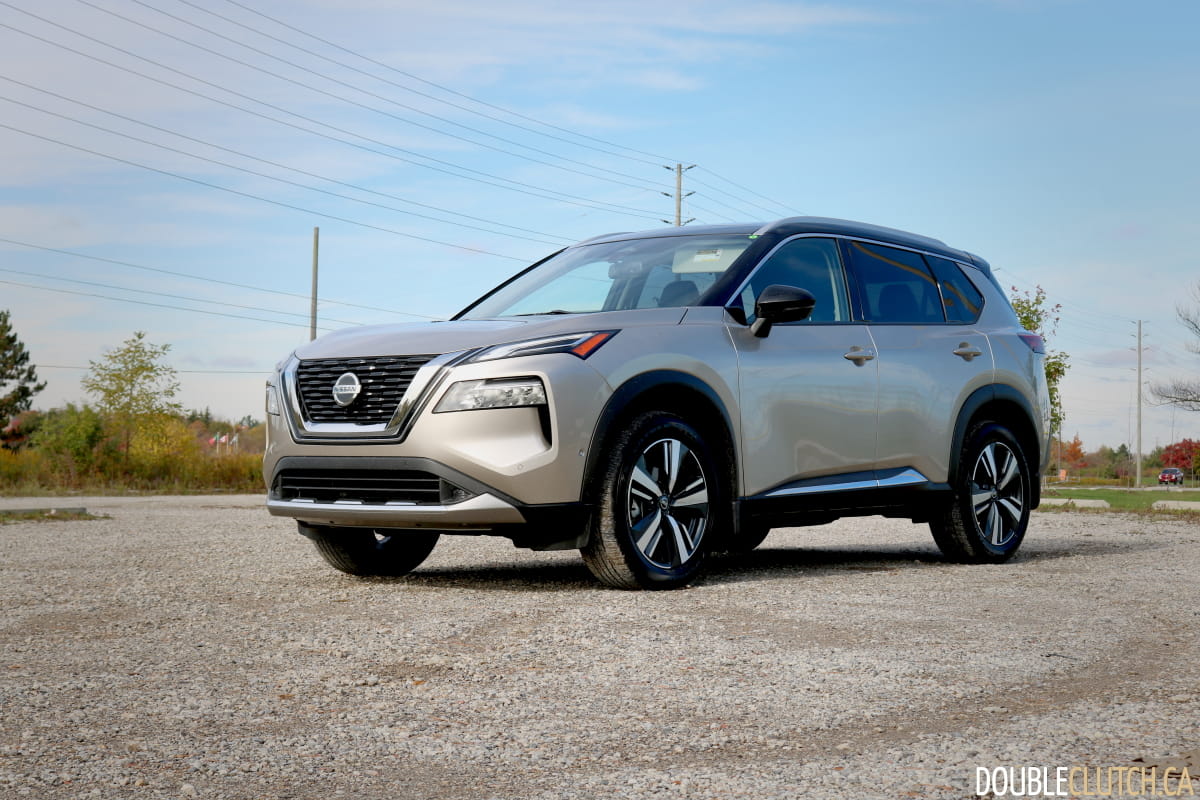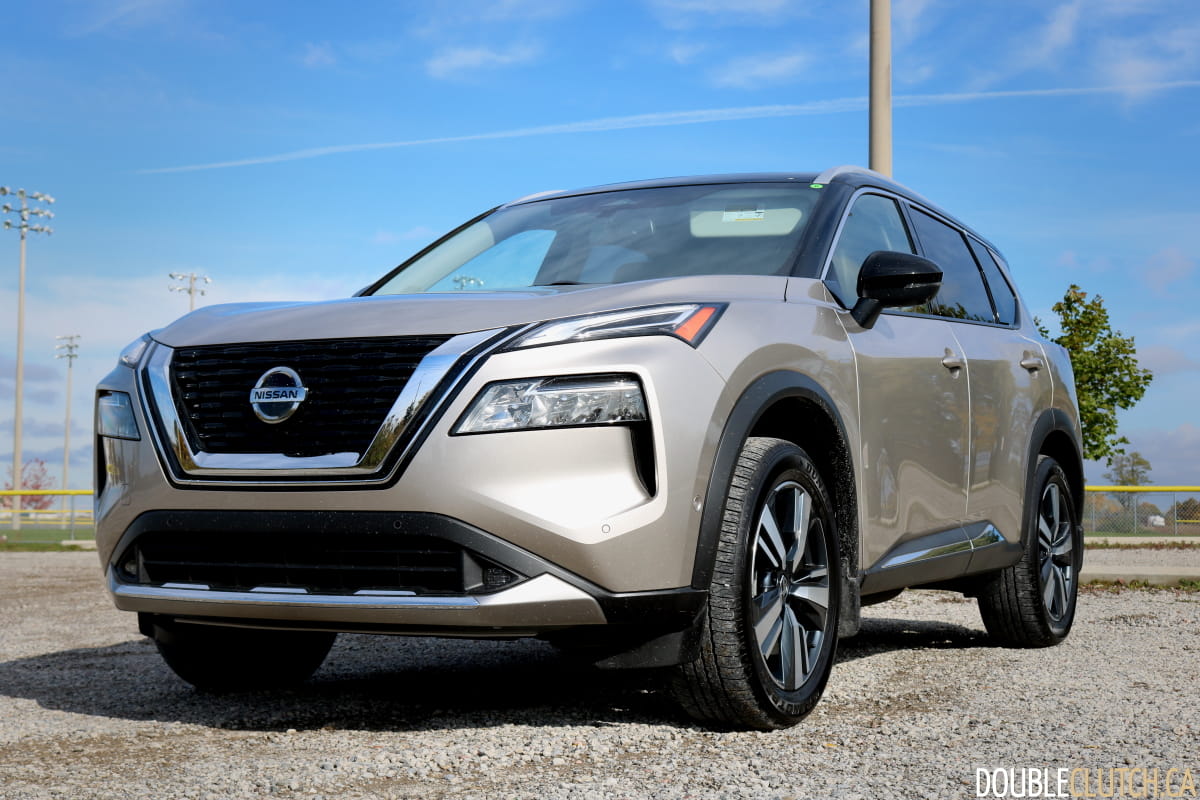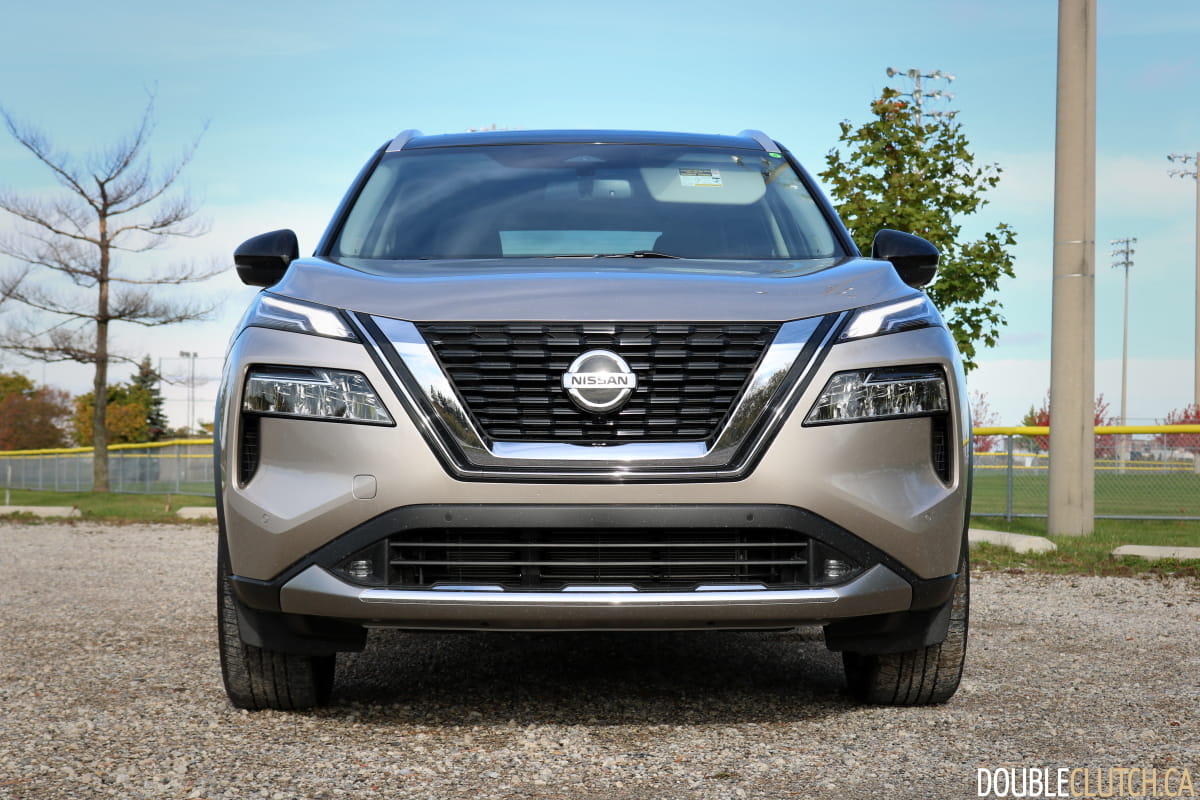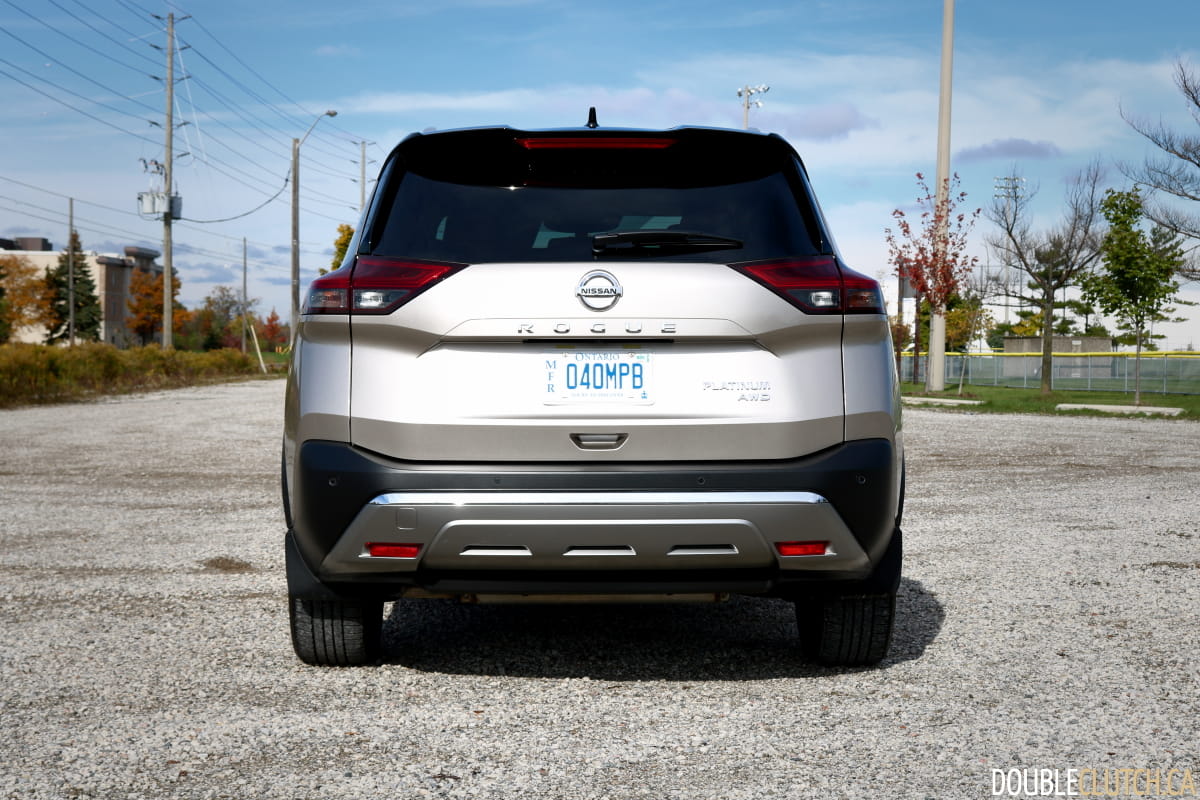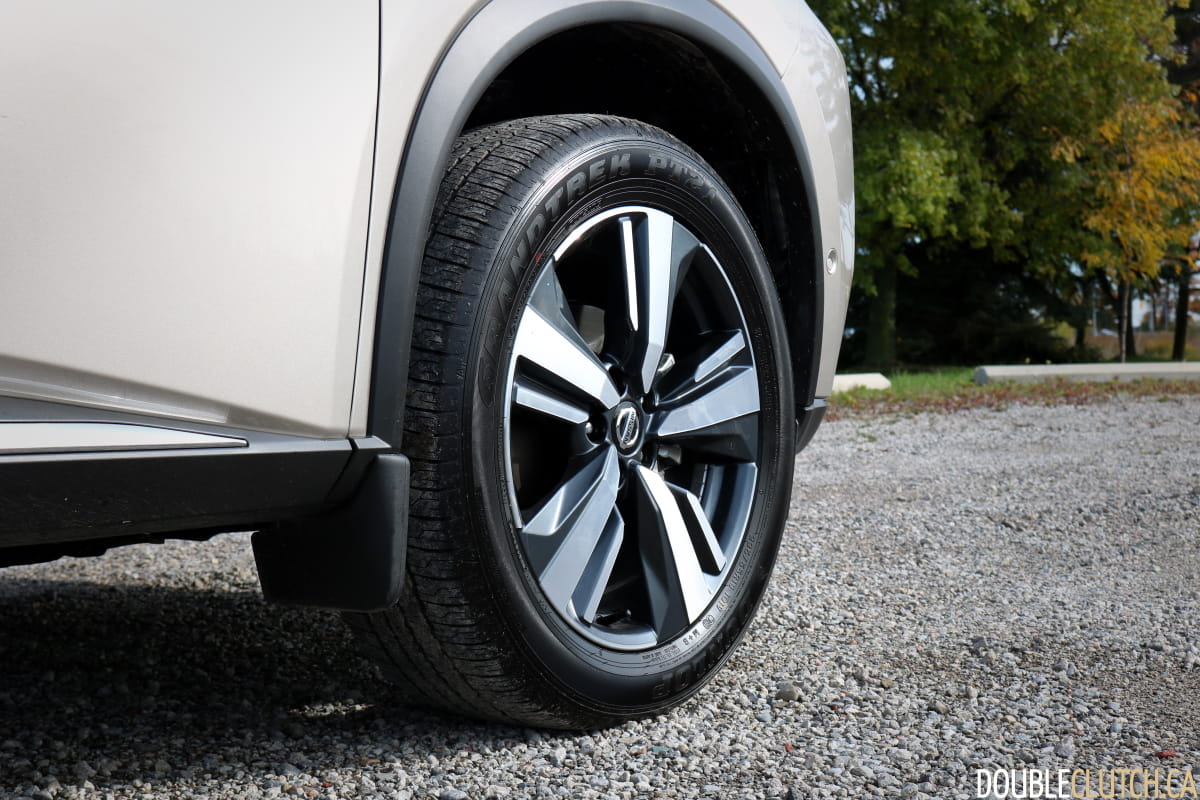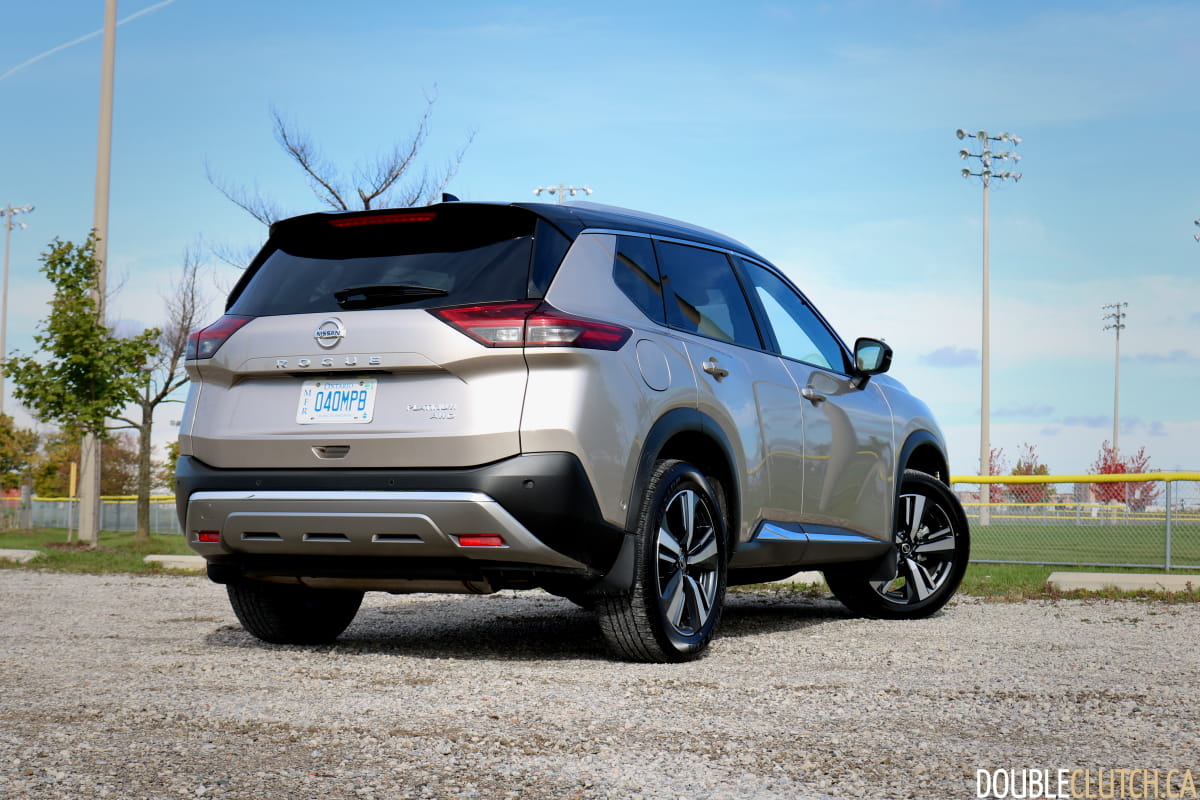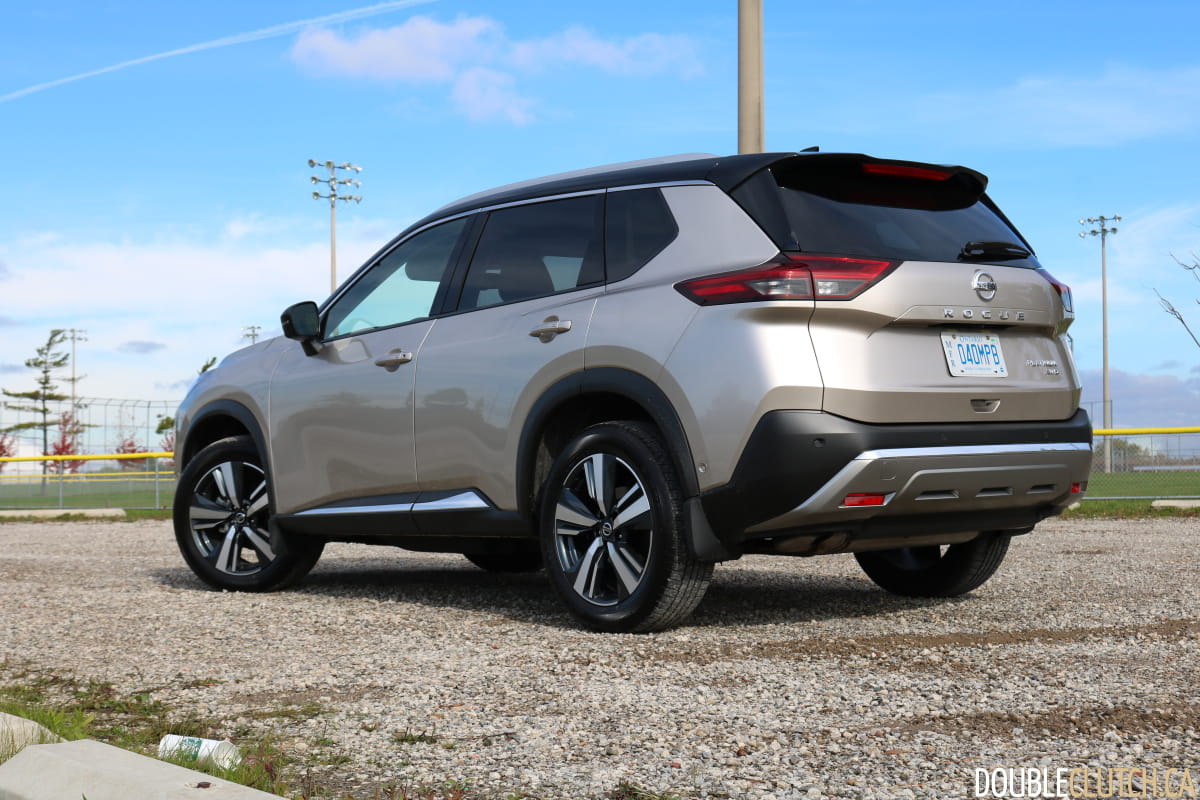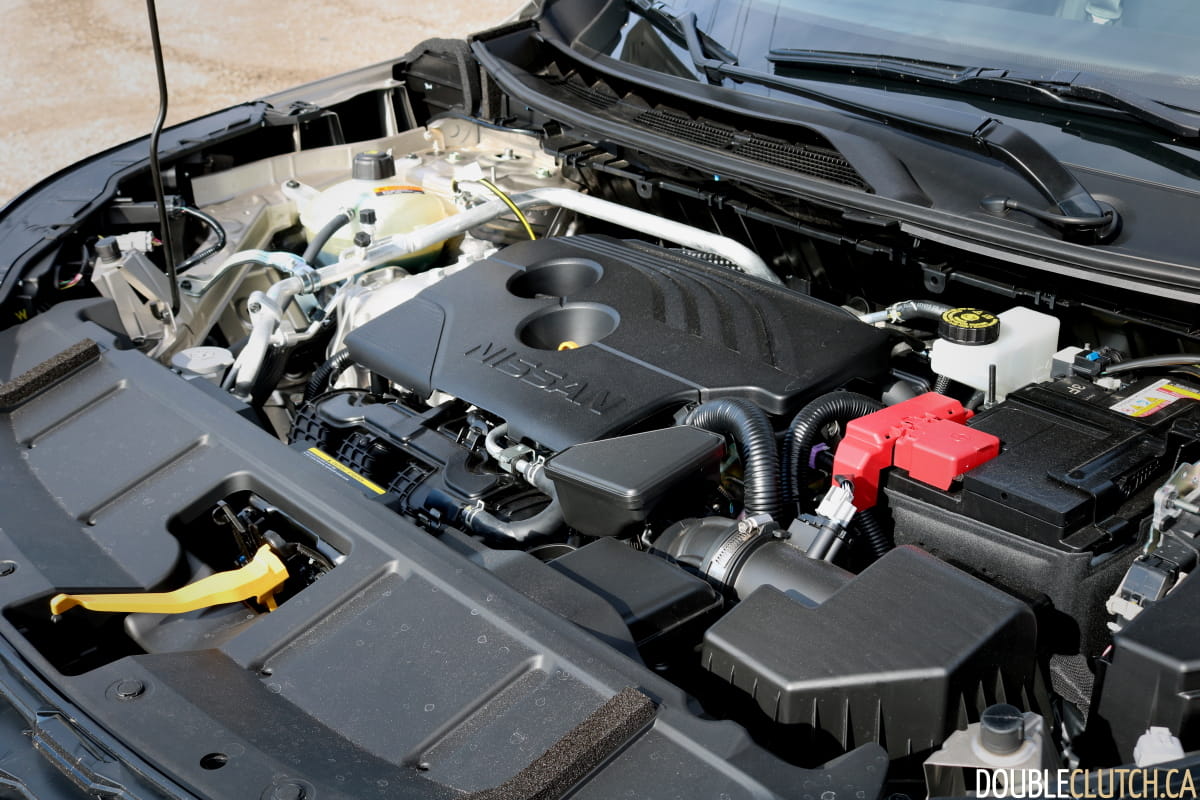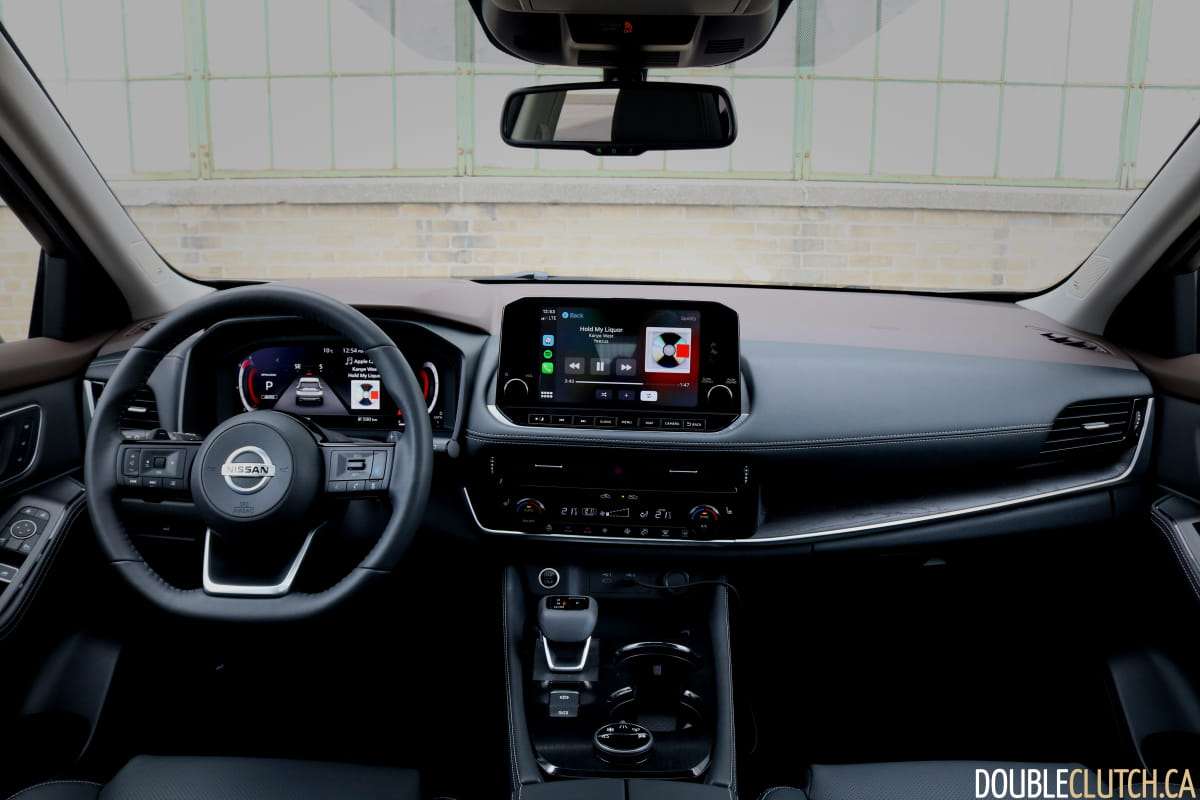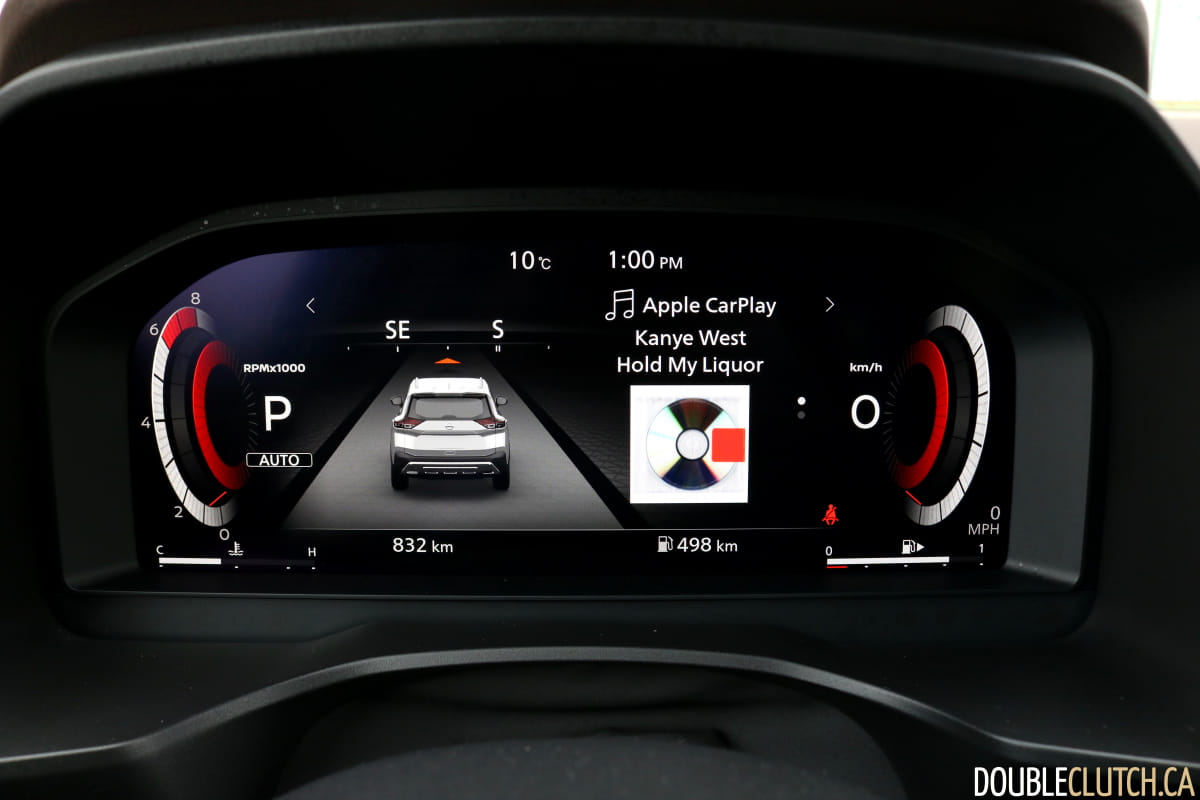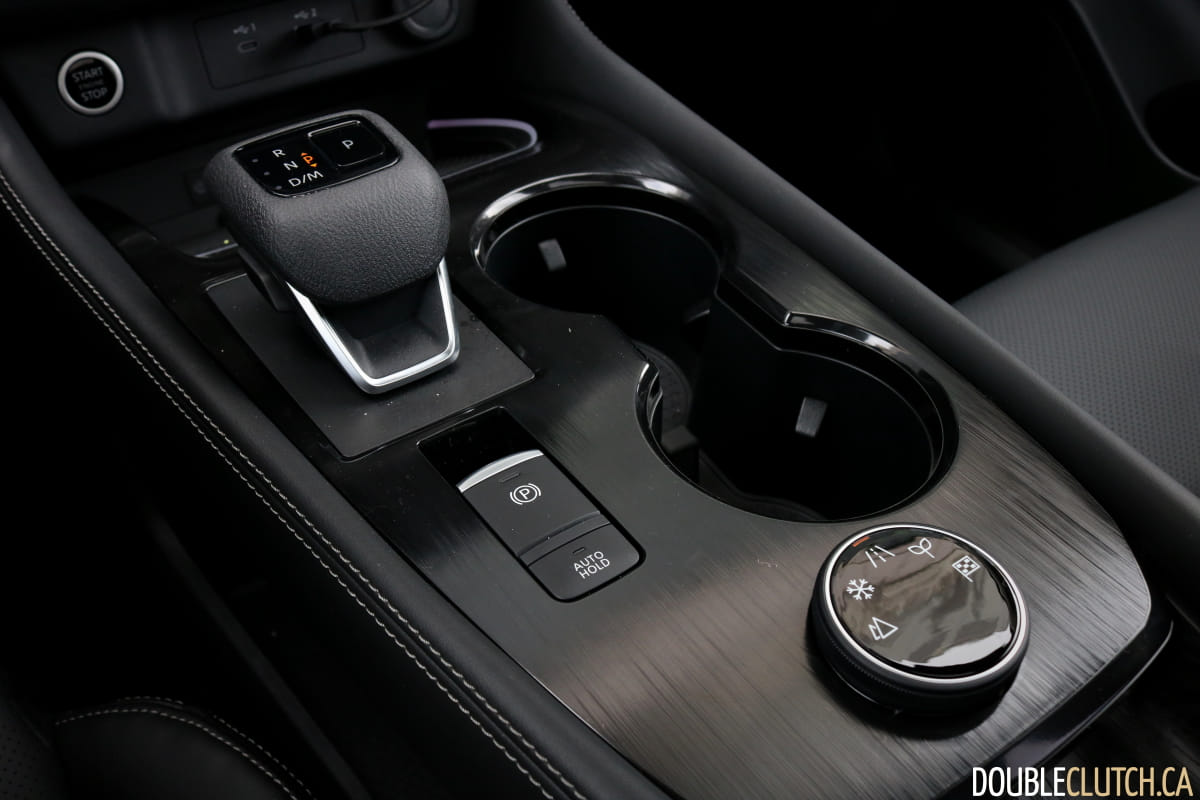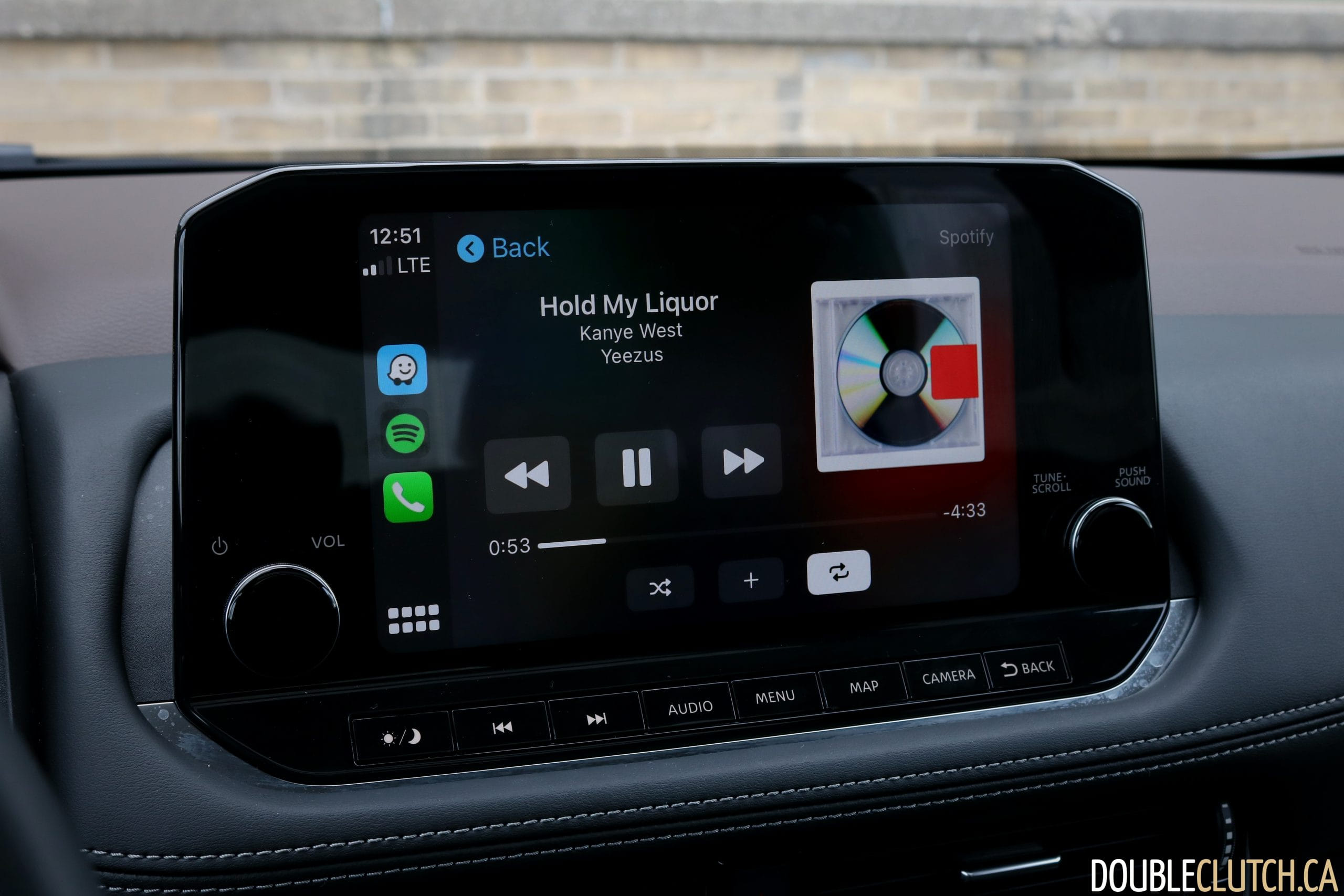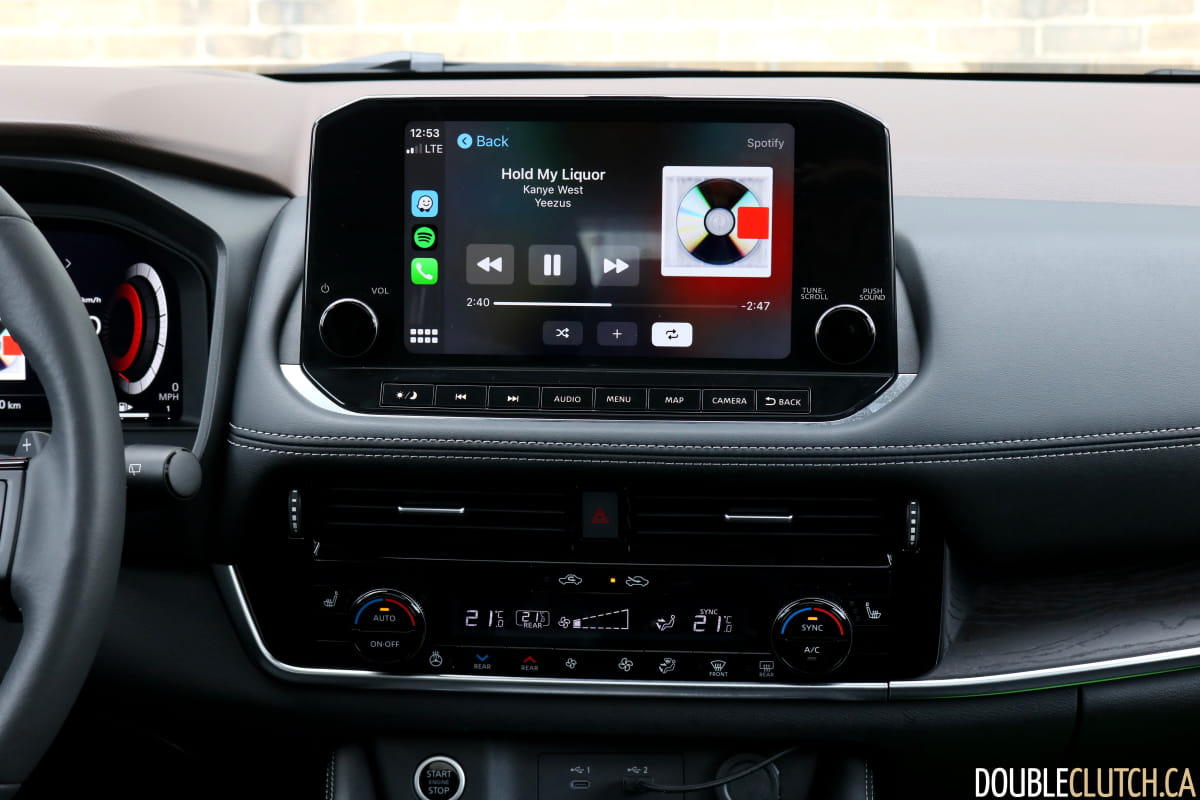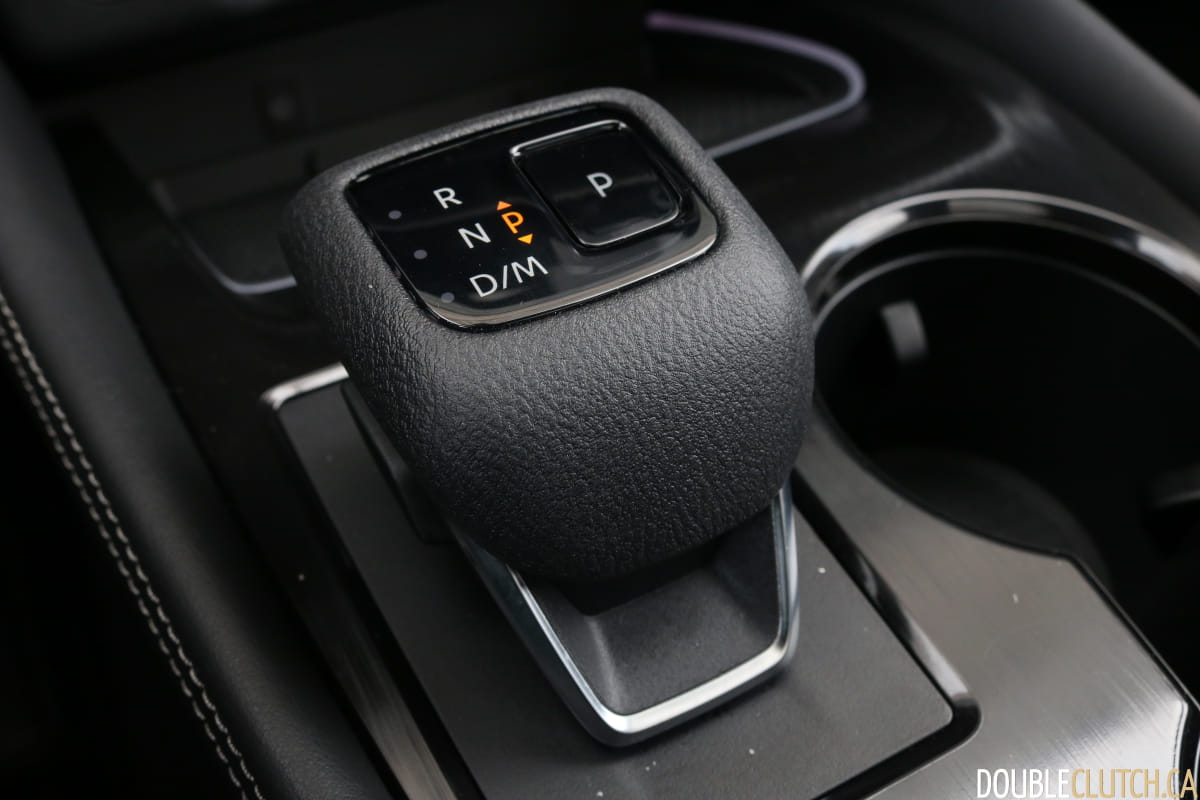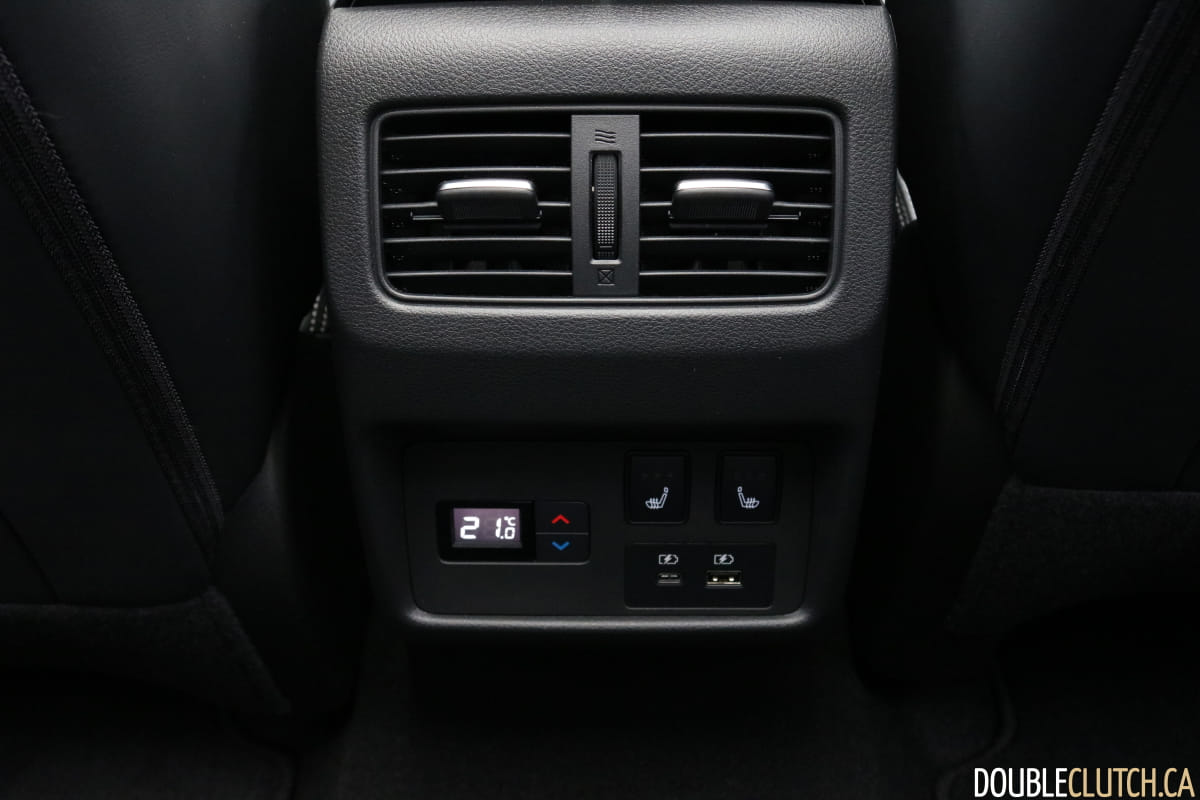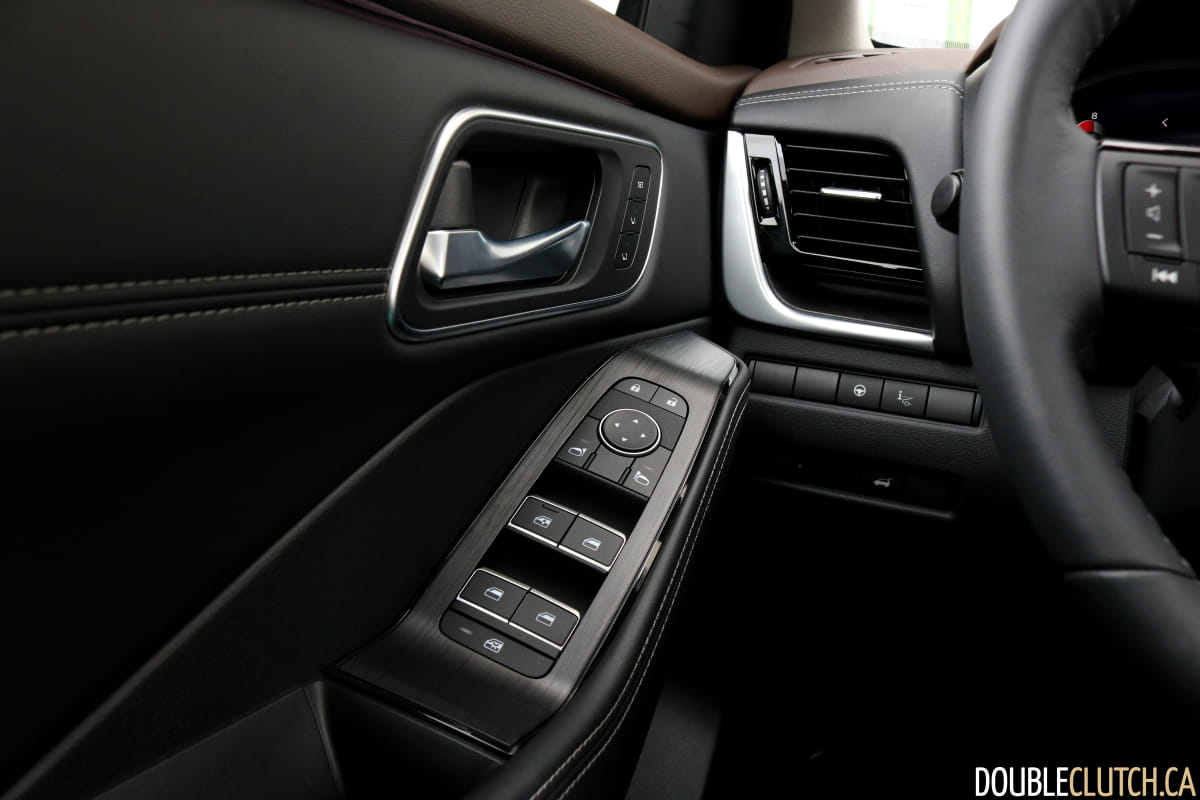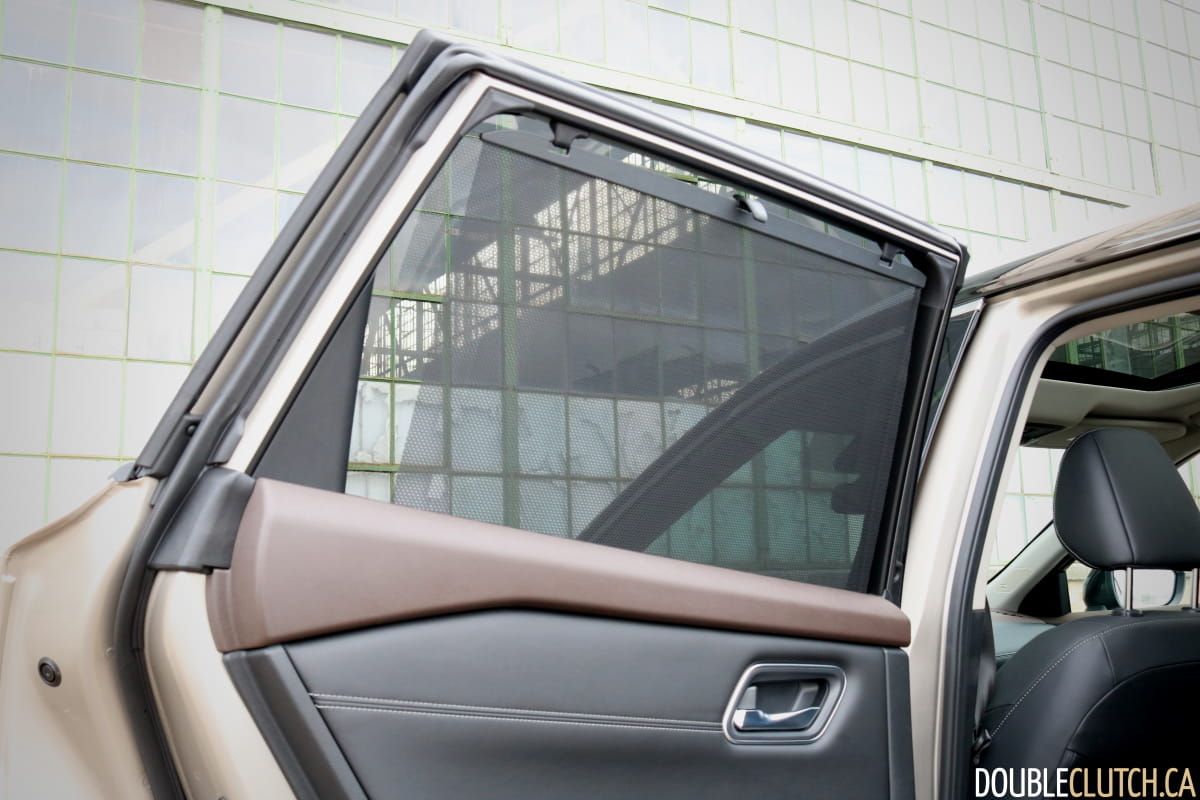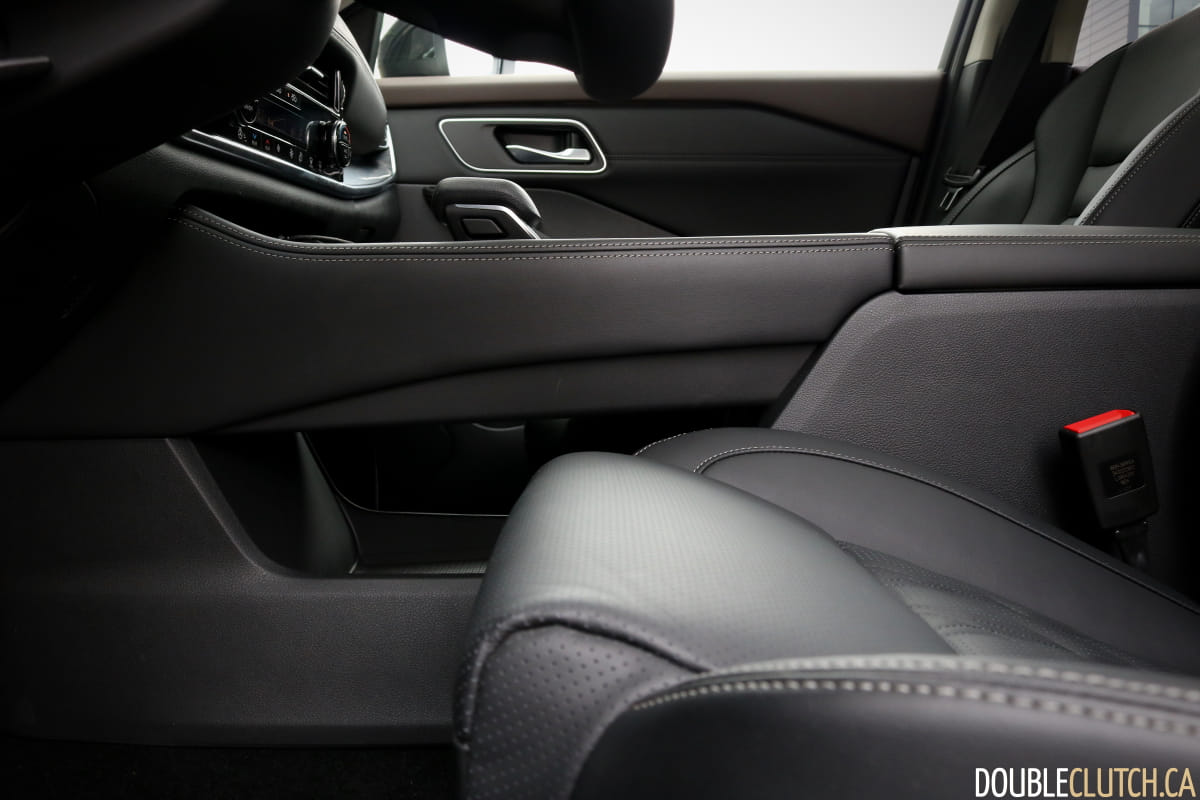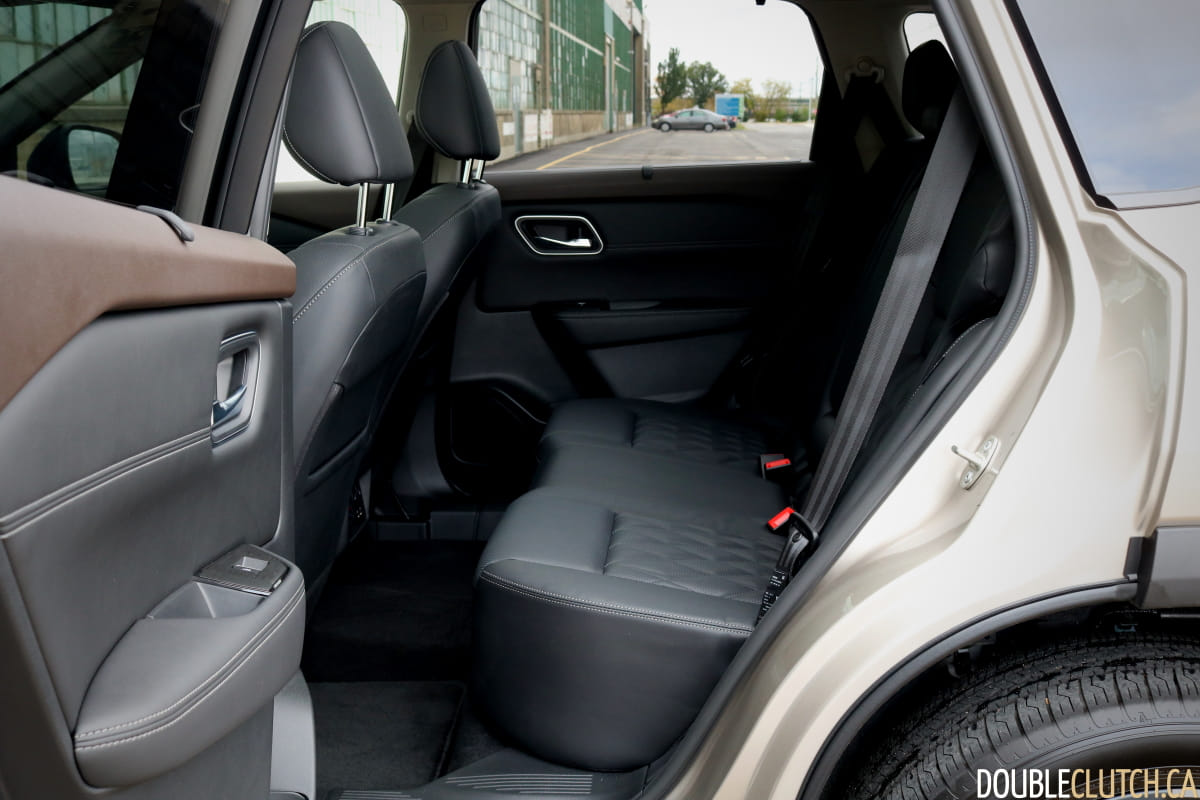In 2019, the Rogue made up a full 30 per cent of Canadian Nissan sales. It’s a product that Nissan cannot afford to screw up and for 2021 it gets a full revamp from top to bottom. Does this new 2021 Nissan Rogue have what it takes to fight off competition in the toughest segment in the automotive industry today? Let’s find out.
The rough and tumble overlanding aesthetic has been permeating its way into the crossover utility vehicle market for the past few years. Despite actually being slightly shorter than the outgoing model, the squared-off roofline, higher leading edge of the hood and fewer body side character lines give the impression that the new Rogue is a larger, more imposing vehicle. Up front, Nissan has given the new Rogue a split-level LED headlamp treatment and a more angular interpretation of their signature V-Motion grille.
Those aforementioned LED headlamps are standard on all Rogues, as are LED taillamps. Seeing and being seen in the dark is an important safety feature so it’s nice to see Nissan taking it seriously by not putting high-performance lighting behind a paywall. Out back, a silver lower valence helps break up the rear bumper which is mostly unpainted plastic that’s less susceptible to scratches from loading and unloading cargo than a fully-painted bumper would be.
Moving up to the tailgate, Nissan has given the Rogue a large tailgate release handle that’s easy to use with gloves on and withheld from plastering tacky chrome trim above the number plate for the sake of appealing to anyone who’s ever bought a Buick LeSabre with actual money. Good stuff.
Gazing farther upwards, Nissan has styled the new Rogue with crisp haunches and front fender tops that help cement an impression of mass. To quite literally top it all off, a black roof treatment is available and a panoramic moonroof comes standard on mid-range SV trims and up. Overall it’s a handsome look that’s likely to resonate with consumers.
Step inside the new Nissan Rogue and the amount of in-cabin tech is mesmerizing. The loaded Platinum model gets a 12.3-inch fully-digital gauge cluster, a nine-inch infotainment screen and a 10.8-inch heads up display. The cluster alone displays speed in both metric and English units, engine RPM, mileage, fuel range, what song is currently playing – and that’s just on the home screen. Cycle through its two display styles and it becomes apparent that this is one of the best digital gauge clusters in the industry. Display definition is quite high with exceptional black levels and animated transitions are liquid-smooth.
Nissan typically does a good job working with Bose to create dynamic premium audio systems, and the one available in this new Rogue is no exception. Staging is excellent for the segment and sub-bass is surprisingly tight. While many premium audio systems in compact crossovers are either two tin cans held together by a length of string or evoke memories of being a pimply-faced adolescent bumping Get Low by Lil Jon & The Eastside Boyz through a cheap 12-inch subwoofer in the high school parking lot during lunch hour, the Rogue’s available Bose system is suited for more mature tastes.
What’s more, every single Rogue supports playback of FLAC files from a USB thumb drive for ultra-high-quality playback compared to MP3 or M4A. This is extremely uncommon in the industry and it’s nice to see Nissan taking advantage of FLAC lossless playback capability.
Because Nissan chose to eschew capacitive touch controls for good old-fashioned buttons and knobs, every bit of electronic kit in the new Rogue is incredibly easy to navigate through. It only takes a matter of minutes for a driver to take their eyes off the tech and set their gaze on the rest of the Rogue’s interior which happens to be quite nice. Our Platinum-trim tester had semi-aniline leather seats with gorgeous stitching, a two-tone black and brown interior colourway, rear side window sunshades and black faux-wood trim cut from premium faux-trees from the finest faux-forests.
The new Rogue’s front seats are arguably the most comfortable thrones in the compact crossover segment. While it’s easy to cast Nissan’s “Zero Gravity” nametag for their seats aside as meaningless marketing drivel, they support the driver and front passenger in all the right places from upper back to thighs. Best of all, they’re standard on all Rogues.
Those front seats come heated as standard on all trim levels in Canada and a heated steering wheel is also standard equipment. Interestingly enough, cooled seats aren’t available on any trim of the new Rogue. While not exactly a universal option in the segment, certain competitors offer them and it is a nice feature to have on hot summer days or when leaving the gym. Moving on back, the second row adopts stadium-style seating for a better view out the front. It’s also a very comfortable place to be with plenty of space, great seat comfort and the availability of both an automatic rear climate zone and heated rear seats.
Furthermore, parents will be pleased by the presence of five LATCH tethers for superior configurability of baby seat placement. Compared to many competitors such as the Mazda CX-5 (reviewed here) and Ford Escape, a front-facing child seat will fit without the need for taller drivers to hunch up close to the wheel like LeBron James trying to fit in a Power Wheels Barbie Escalade.
While a 2.5-litre inline-four making 181 horsepower and 181 lb-ft. of torque hitched to a CVT doesn’t exactly sound too promising, there’s much more to the way the new Rogue drives. Nissan pioneered the hyper-digital trust-in-the-machine driving experience with the R35 GT-R (reviewed here) and some of that techno-wizardry has trickled down into this new Rogue. By braking individual wheels whenever the computer sees fit, the new Rogue simply pulls itself around bends like no other compact crossover. Moreover, the steering is fast and well-weighted and mid-corner bumps are simply absorbed by the Rogue’s suspension.
Pitch it through a constant-radius on-ramp and it only takes half a beat for the Rogue to be completely neutral, requiring minimal steering input to set and maintain a line through the bend. And with the option box for all-wheel-drive ticked, the Rogue puts the power down well out of corners. Although our first drive only consisted of a day of driving, we set the goal of driving as much as possible and ended up netting real-world fuel economy of 8.6 L/100km in a mix of city and highway driving which is likely to please consumers immensely.
That’s not to say that the driving experience is flawless, however. Our test example exhibited a minor powertrain vibration at around 1,500 RPM that made its presence known by sending slight shivers through the steering wheel. It’s likely not a deal-breaker for most consumers but it’s still worth noting. Also worth noting is how quiet it is inside the new Rogue. Road noise is admirably hushed thanks to extensive sound insulation and aerodynamically-optimized pillars and mirrors, while even the fan for the climate control is nigh-on silent. The panoramic moonroof opens towards the inside of the Rogue to prevent it from being a source of buffeting and wind-whistle when open.
Nissan has also upgraded its ProPilot Assist advanced driver aid system with a new forward-facing camera and a new radar unit and offer it in two tiers on this new Rogue. The mid-range SV trim gets the standard variant of this upgraded system while the top-spec Platinum trim adds something Nissan likes to call Navi-Link. As the name suggests, it links ProPilot Assist with the navigation system which allows the Rogue to exhibit better semi-autonomous speed control in bends, come to a full stop for up to 30 seconds on highways with ProPilot Assist active and adjust semi-autonomous cruise speed automatically based on the current speed limit.
As for the system itself, it works reasonably well. Curve control is good and both distance maintenance and braking is so smooth it’s almost human. However, lane-centering on stretches of road with faded or orange construction lane markers still isn’t bang-on. Most people will be pleased with this new-generation system though as it’s still more refined than many competitors’ systems.
The 2021 Nissan Rogue is very comfortable, quite efficient, extremely well-equipped and rather pleasantly designed. It’s also a fantastic amount of car for the money. Pricing starts at $28,498 for the base S FWD, escalates to $31,998 for the mid-range SV FWD and tops out at $39,998 for the top-tier Platinum trim shown here. All-wheel-drive is a $2,300 option on S and SV trims. This compares extremely competitively with the rest of the compact crossover utility vehicle field, especially once the level of equipment is factored in.










